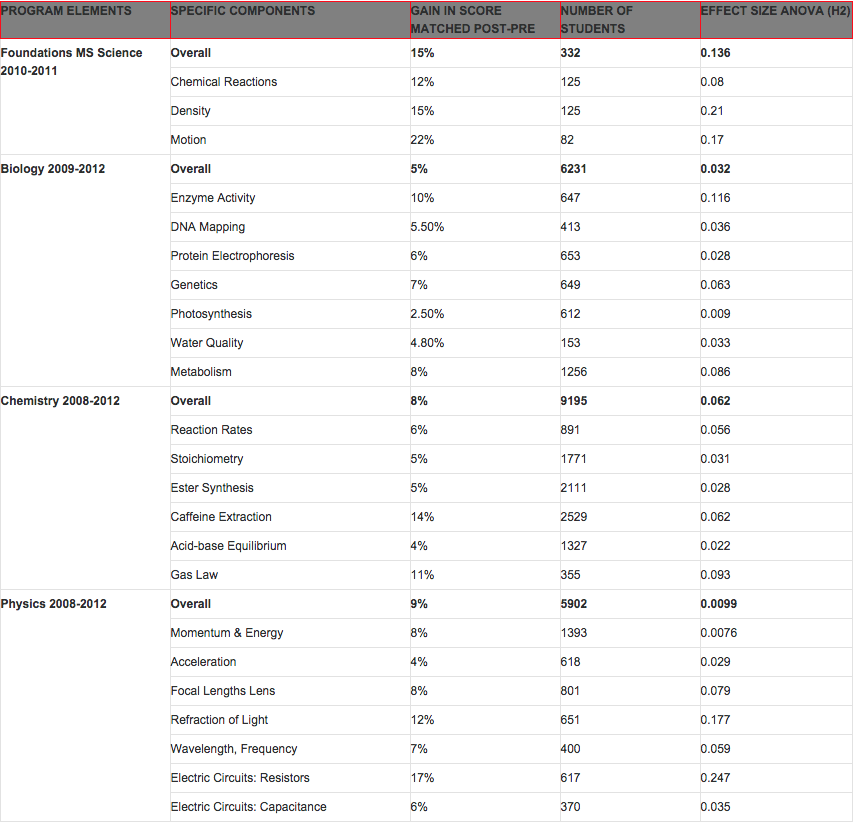The Evidence Is In: Tops Works to Improve Student Understanding
Over the last several years the TOPS program has been measuring the impact of participation in the TOPS labs upon student conceptual understanding. For this assessment TOPS has used almost exclusively release questions from prior California CST exams (or New York Regents exams only when necessary) as these questions reflect the content standards in California and achievement expectations for our students. This is a challenging undertaking, as the assessment needs to match each individual student’s pre and post assessment as well as collect a sufficient number of responses to achieve statistical significance for the diverse Los Angeles area student population. Finally, as the assessment progressed, it was necessary to revise some of the questions based upon the student’s responses to improve the overall reliability of the assessments. The revisions have greatly benefited from the guidance of experienced TOPS teachers, indeed, the collaborations fostered by the TOPS program have yielded multiple local professional learning communities that reflect a key element in the program’s success.
The TOPS program anticipated collecting data for several years, but like a clinical trial of a new medical procedure, when the data indicates a substantial effect of the “treatment” on the participants, one wants to share that information with the wider community. That is precisely what was found and has been posted below under the teacher resources alignment/assessment link for each of the specific labs in their respective discipline. The wonderful good news is that while the specific results vary depending upon discipline and laboratory, when the student’s scores pre to post are compared a statistically significant, substantial gain in the students understanding of concepts is found. The gain ranges from 5 to 17% for Biology, Chemistry, Physics, and Middle School Science (see table below). Furthermore, multiple regression analysis shows these gains in understanding are independent of gender and nearly independent of the student’s ethnic backgrounds. In short, all the students, regardless of background, benefit from their hands-on participation in the TOPS labs.
When coupled with the alignment of the TOPS labs with the California State Science Standards as well as the AP Curriculum, these findings further substantiate the important role of the TOPS Program in furthering the science education of all Los Angles area students, regardless of their background. Indeed, it was the program’s effectiveness that led to an exciting new collaboration on an NSF-Math Science Partnership proposal with faculty in the Viterbi School of Engineering and the Rossier School of Education at USC to help students in LAUSD.

